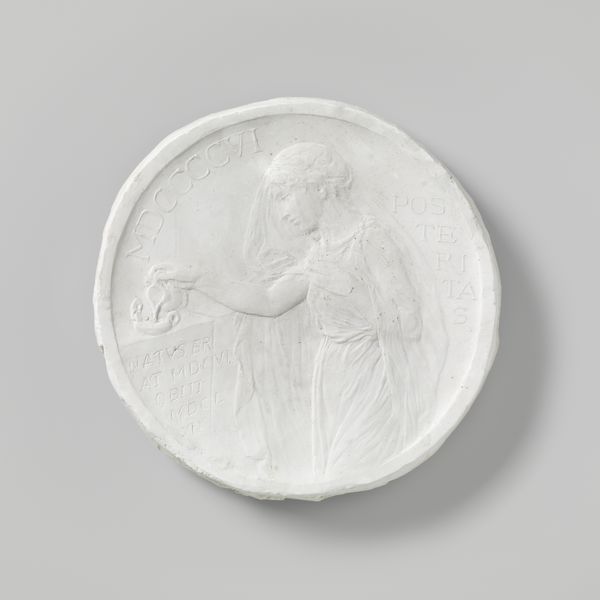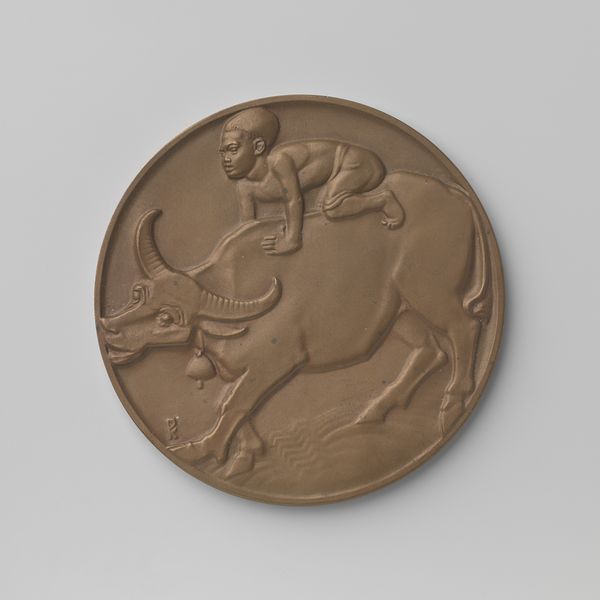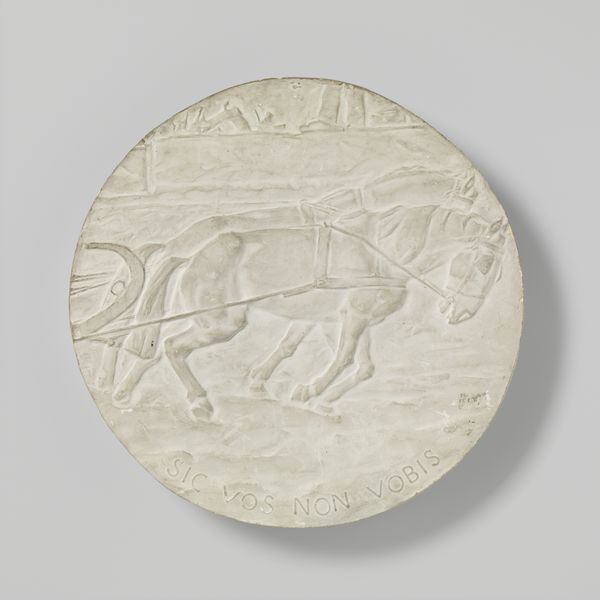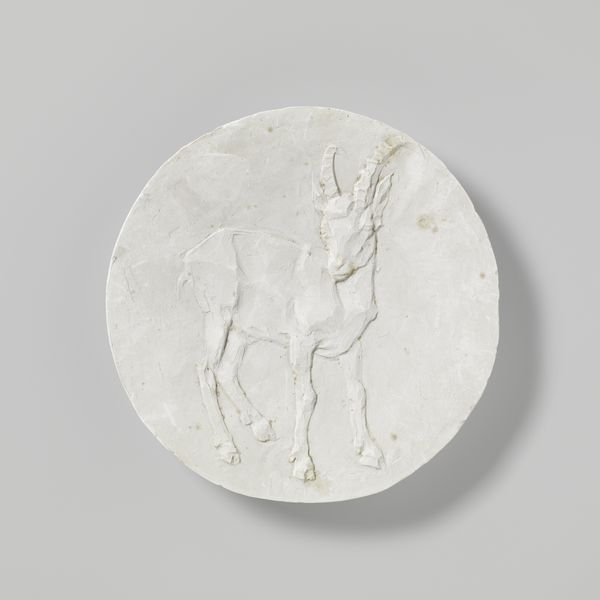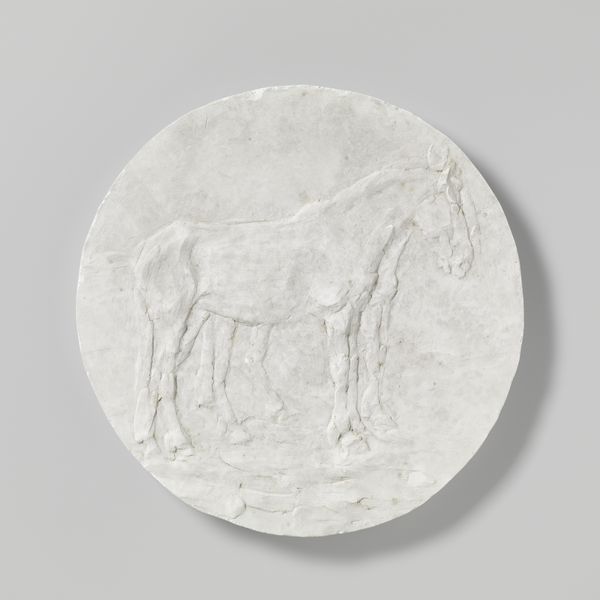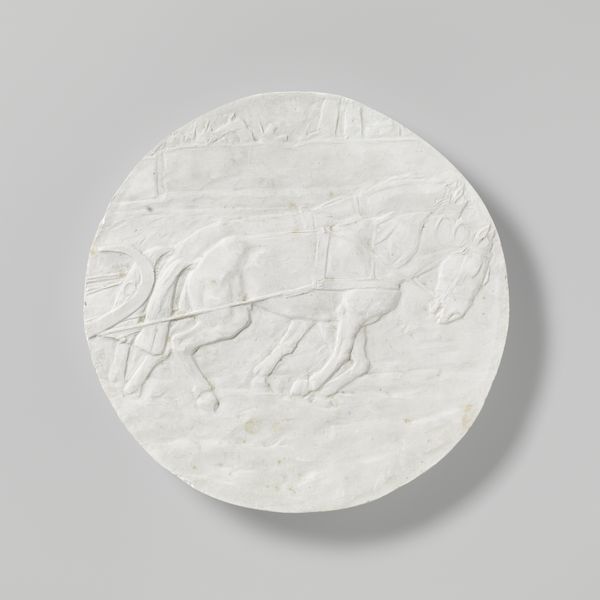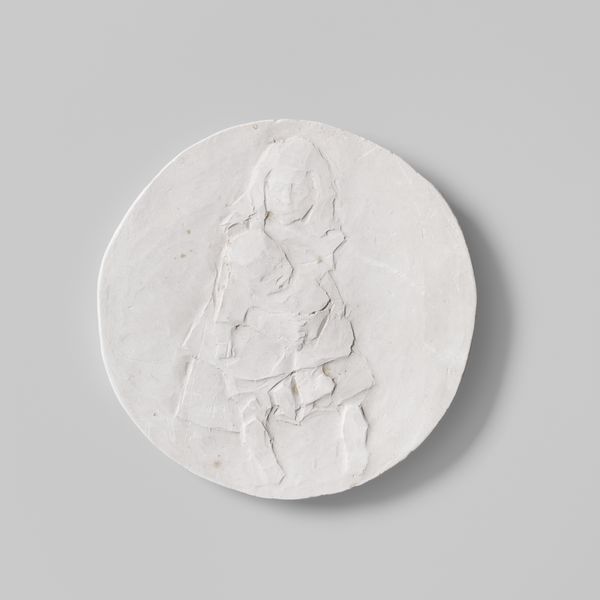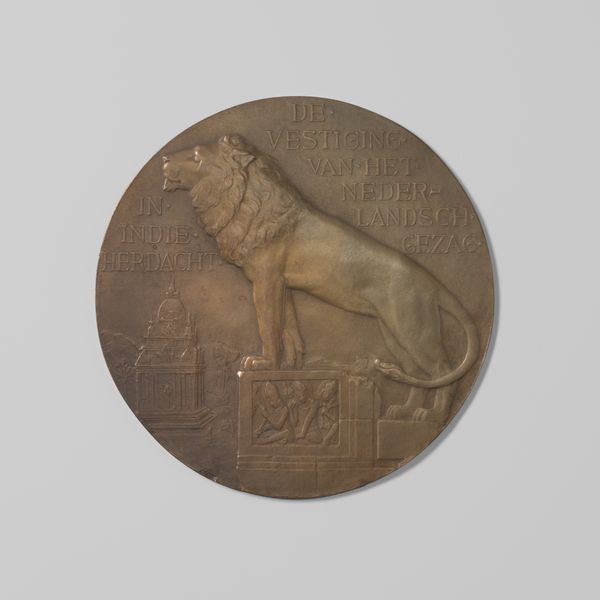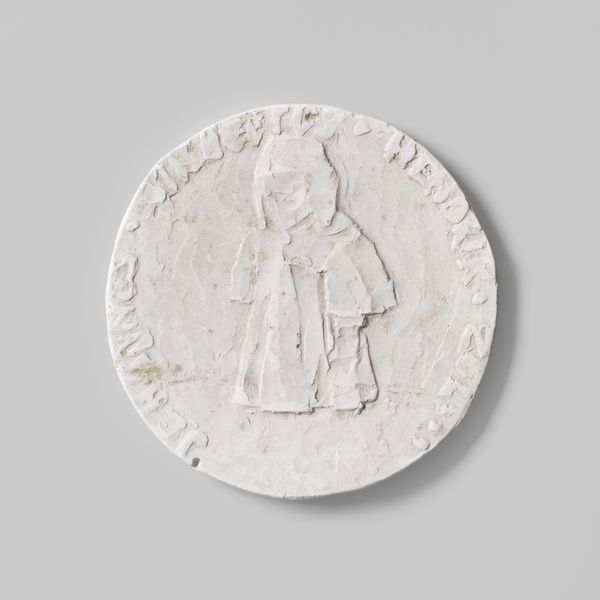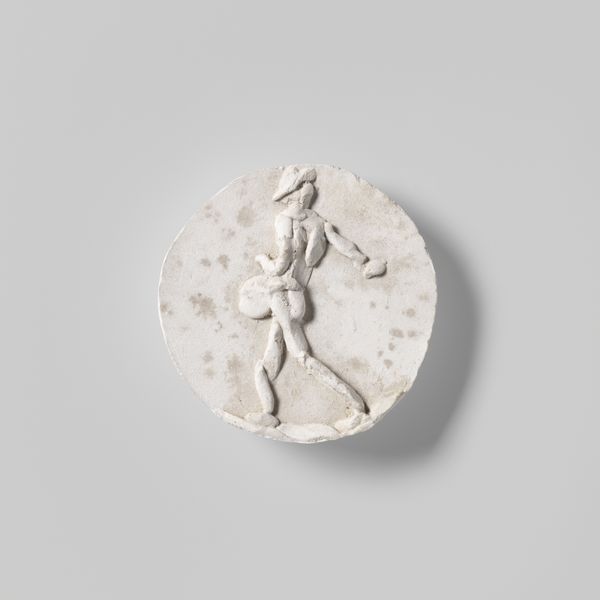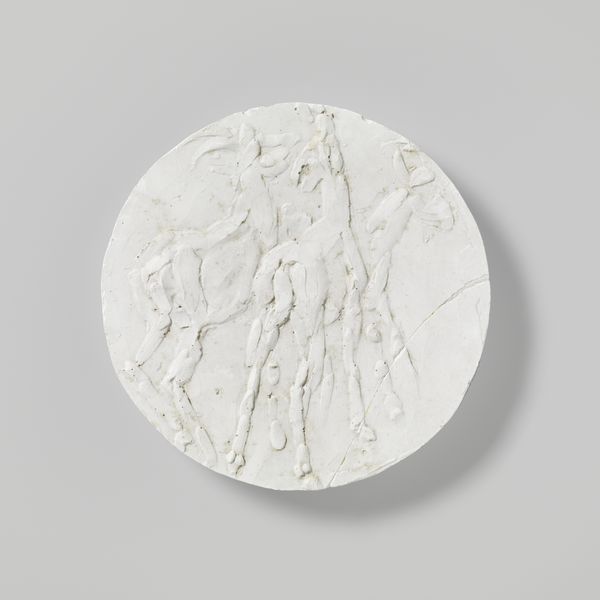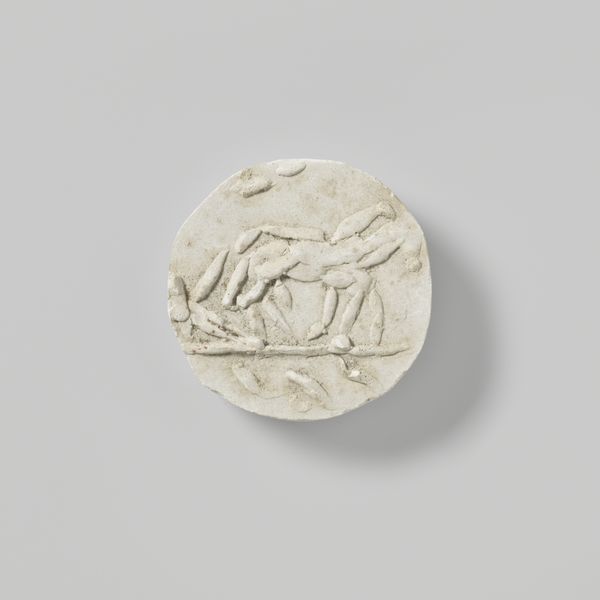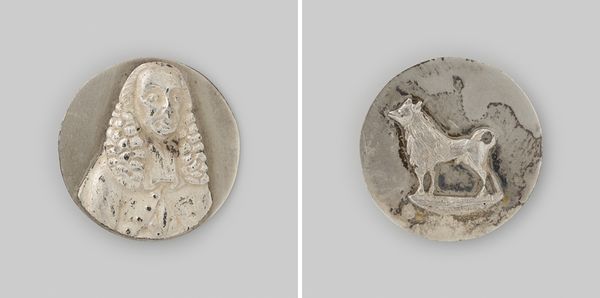
relief, sculpture, plaster
#
portrait
#
relief
#
classical-realism
#
sculpture
#
plaster
#
history-painting
#
academic-art
Dimensions: diameter 16.5 cm, thickness 2.5 cm
Copyright: Rijks Museum: Open Domain
Curator: What strikes me immediately about Johan Melchior Faddegon's "Voorstudie in gips voor Rembrandt-penning" from 1906 is its materiality. Plaster. It’s not just the final product, but the trace of labor, isn’t it? How does the plaster as a medium itself inform our understanding? Editor: It's fascinating how this quite rough plaster relief serves as a study for a medal commemorating Rembrandt! It feels quite intimate, and kind of raw. How do you see its significance? Curator: I see a direct relationship to production. Faddegon is working within the lineage of the artisanal tradition. Think of the physical act of sculpting, the labor involved in creating even this preparatory sketch. This "raw" quality you mention isn't a flaw, it reveals the making process! Editor: So, the roughness isn't a lack of skill, but a deliberate emphasis on the process? Does the intended use of this study -- as preparation for a coin -- affect its value as art? Curator: Precisely! Faddegon, by showing us this “behind-the-scenes” version, elevates the act of crafting itself. And about value, it invites us to consider how our understanding of 'high art' versus 'craft' is constructed through the economics of art. Think of the social implications of manual labour reflected in a single, relatively inexpensive, material like plaster. Editor: I see now. It's a tangible link to the artist’s process and challenges established hierarchies. I would not have viewed the economic aspects otherwise. Thank you! Curator: Exactly! The object is more than a mere image; it's a record of the social circumstances that shaped it. Food for thought, I hope.
Comments
No comments
Be the first to comment and join the conversation on the ultimate creative platform.
